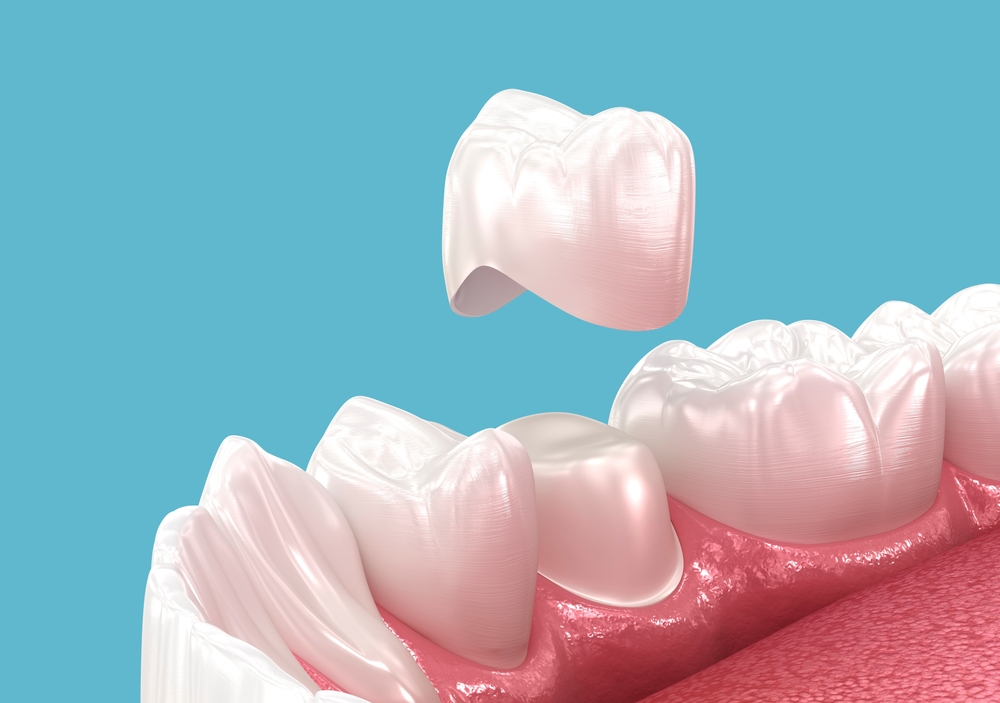Understanding Dental Crowns
Dental crowns protect teeth that are weak or damaged. These custom-made caps restore strength and improve appearance, addressing decay and completing dental implants and bridges. Available in ceramic, metal, and composite resin, each type is tailored for comfort and durability.
Crowns enhance smiles and prevent issues related to weak or broken teeth. They are necessary for heavily damaged teeth due to decay or after root canal treatment to provide stability and support. Crowns also support dental bridges for missing teeth, improving functionality and appearance.
Preparing for Your Dental Crown Procedure
Preparation for a dental crown begins with a thorough check-up and planning. During your first visit, the dentist assesses your oral health and creates a personalized plan. They may use safe tools, such as X-rays or scans, to determine your needs. Your dental hygienist will also assist in ensuring your mouth is clean before and during the procedure.
Initial consultation and diagnosis
Your journey to a crown starts with your first dental visit. During this visit, your dentist will examine your teeth for signs of decay or cracks. You’ll collaborate with the dental hygienist to ensure your teeth are clean. Accurate measurements and selecting the right approach are crucial for effective treatment planning. Your discussions during this meeting will help determine the best crown type and material for you.
Planning and choosing the right crown material
Choosing the right material for your dental crown is crucial. Your dentist will guide you based on your usage and preferences. Here are common options:
- Metal crowns: Known for strength and durability.
- Ceramic crowns: Ideal for a natural appearance, especially for front teeth.
- Resin crowns: Cost-effective and suitable for less visible teeth.
- Non-metal crowns: A good choice for those with metal sensitivities.
Selecting the right material ensures the best look and feel. Next, we’ll discuss the steps to getting a crown and how to care for it.
The Dental Crown Procedure: Step by Step
A dental crown procedure generally requires two visits to the dentist. During the first appointment, your dentist cleans decayed tissue, shapes the tooth, and takes impressions for the new crown. In the second visit, the dentist fits the crown using a strong adhesive. Each step restores the tooth’s functionality.
Tooth preparation and impression-taking
During your first visit for a crown, the dentist prepares your tooth by removing damaged enamel from decay or wear, creating a strong base. After cleaning, they take impressions to ensure a proper fit for your crown while minimizing plaque buildup. A temporary crown is then placed to protect your enamel until the final crown is ready.
Placement of a temporary crown
A temporary crown protects your tooth between dental visits. Made from lightweight materials and secured with gentle glue, it safeguards your enamel. While not as strong as a permanent crown, it provides good protection and allows you to eat and talk comfortably. However, be cautious; excessive pressure can loosen the crown. This quick fix prepares you for a permanent solution.
Receiving Your Permanent Crown
Your new crown will be placed during your second visit. The dentist expertly cements it, ensuring durability and proper function. A well-fitted crown can last 5 to 15 years or longer, blending seamlessly with your other teeth for both aesthetic and functional benefits.
Fitting and adjusting the permanent crown
Fitting a permanent crown requires careful adjustment and precision. Your dentist ensures the crowned tooth is secure, looks right, and feels comfortable with the surrounding teeth to prevent shifting or discomfort. While uncommon, some may experience facial swelling or sensitivity after placement, especially if they have mild allergies. In such cases, the dentist may adjust the crown’s fit or the application of the cement for relief. Regular visits to your dental hygienist will help maintain your crown over time. Once properly fitted, cement secures the crown in place to complete the procedure.
Final placement and cementation
The final step your dentist will take is placing the permanent crown using strong glue to secure it. This prevents gum disease and irritation, crucial for the crown’s longevity. After placement, your dentist will check your bite to ensure even pressure, preventing future issues. With proper care, your new crown can last for many years, contributing to your oral health.
Caring for Your Dental Crown
Caring for your crown extends its lifespan. Brush daily with fluoride toothpaste and use floss to prevent dental plaque and cavities. Regular dental visits are essential for monitoring your crowned tooth and maintaining oral health. By focusing on these details, you can ensure both your crown and mouth stay healthy.
Daily oral hygiene tips
Caring for your crown begins with daily oral hygiene. Here are essential steps:
- Use fluoride toothpaste to strengthen enamel and protect teeth.
- Floss regularly to reduce plaque and avoid cavities.
- Visit the dentist every six months for a deep clean and check-up.
- Consult your dental hygienist about the best cleaning habits for your crown.
These simple practices can prolong your crown’s lifespan and reduce wear and other issues.
Foods and habits to avoid
Some foods and actions can damage your crown. Keep these tips in mind:
- Avoid hard foods, especially on the chewing surfaces of back teeth.
- Long-term use of smokeless tobacco can lead to early tooth decay.
- Reduce your intake of sugary snacks to minimize dry mouth and plaque growth.
- Be cautious with sticky foods, as they can dislodge your crown.
Following these steps will enhance the longevity of your dental work and reduce the risk.
Longevity and Durability of Dental Crowns
The lifespan of a crown varies based on the material, care, and placement in the mouth. Types include metal and ceramic crowns, each offering unique benefits. With proper care, a crown can last 5 to 15 years or even longer. Research in the U.S. indicates that crowns effectively enhance oral health, particularly for older adults, improving chewing and overall tooth function.
How long do dental crowns last?
The lifespan of a crown varies depending on the material and usage. Here’s a quick overview:
- Metal Crowns: 15+ years – Very strong, ideal for back teeth.
- Ceramic Crowns: 10-15 years – Natural look but prone to chipping.
- Resin Crowns: 5-10 years – Cost-effective but shorter lifespan.
Proper care extends crown life.
Schedule a Consultation
If you believe you may need a crown, don’t wait to take action. The team at Gradeless Dental will work with you to determine the best option and ensure you’re satisfied with the results. Schedule a consultation to get started.








